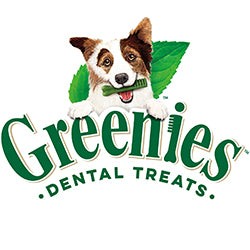
No Pull Dog Harness: How Do They Work?
While walking with your dog sounds simple enough, if your dog constantly pulls on their leash you won’t be able to enjoy a nice leisurely stroll. This is especially true if own a large dog who pulls on their leash. This is where a no pull dog harness comes into the picture.
These types of harnesses are specifically made discourage pulling which will make it easier to walk your dog. There are several reasons why leash pulling can be harmful to your dog and these types of dog harnesses makes it difficult for them to do so.
How Does No Pull Harnesses Work?
The best no pull dog harnesses are ones that clip to the front of your dog’s chest. Standard dog harnesses that have a clip on the back aren’t the best for pulling. This causes your dog to pull with their chest which is stronger than when they pull with their necks.
If your dog tried to pull with one of these on the leash will just go off to the side. This will just lead your dog right back towards you effectively stopping the need to pull. With this type of harness your shoulder will receive a well needed break from the extensive pulling.
Here is a quick pick for a no pull dog harness.
The Pet Life Mountaineer Dog Harness is our best dog harness to stop pulling. It has reflective lining so your dog will be visible at night and it is made of a durable Nylon with dual clips for added security. Its fully adjustable, easy to put on, and is relatively cheap.
Pros
- Cheap
- Fully adjustable straps
- Reflective lining for night protection
- Can fit small medium and large dogs
Cons
- Doesn’t support extra-large sized dogs
- Only available in 2 colors orange and black
Continue reading to learn more about how leash pulling can be harmful, dog harness features, and how to stop your dog from pulling on their leash.
Leash Pulling: Is It Dangerous?
The dangers of leash pulling arise when you are using a collar instead of a leash. Dog Collars Vs. Harnesses is a hotly debated subject but most veterinarians agree that a harness is the safer option. It is recommended that you have both a collar to display their id tags and a harness for walking purposes.
Dog collars can put unnecessary strain on your dog’s neck which can cause damage to their trachea and hair loss around the neck. For smaller dogs you need to take more precaution as their necks aren’t as thick which pulling on their leash can potentially be even more dangerous. This doesn’t mean that large dogs are safe because this kind of pressure can seriously injure their neck.
Excessive pulling also can have an adverse effect on your dog’s behavior. If they see another dog and you start pulling on their leash, they are associating other dogs as being unpleasant to their owners. This is the start of a negative behavior which can cause your dog to bark or show unrest at the sign of another dog.
Dog Harness Features
Each dog harness has its own unique features and choosing the specific ones that apply for your dog should be done.
Pockets: While pockets aren’t always needed when using a harness, they certainly are useful. During hiking and camping trips they can be used to carry treats, waste bags, water etc. There are some harnesses that have removable backpacks only adding the feature when you need it.
Durability: When choosing a harness, the durability comes from two factors the material from which it is made and the stitching quality.
Having a thin dog harness doesn’t mean that it isn’t durable. A thin a lightweight harness has the durability needed for a teacup sized dog. However, on a larger breed it is vastly different and would require something thicker.
For larger dogs hiking and running harnesses are suitable for them. They are generally made of higher quality and has increased padding that will last in most scenarios.
Mesh Padding: Having a padded harness will make your dog more comfortable when walking. Wool and cotton can do the job, but they aren’t as versatile as having mesh padding. If you are going to take your dog for extensive walks, hikes, or runs you need to have a harness with the extra padding.
Cheap harnesses aren’t meant to be worn for long periods of time. The straps can cause inflammation and skin irritation if you leave their harnesses on too long. Mesh padded harnesses extend the duration that you can leave it on.
Reflective Straps: These are great during the winter months when the days are shorter. The reflective straps make your pup easily visible in the dark and increases their safety tenfold. While they aren’t a requirement if you walk your dog at night it’s a great investment in the safety of your pet.
Safety Handles: These are very situational, and they can be used for training. These are great for small dogs when needing to lift them off the ground in an emergency. They do have handles on larger harnesses, but they are less effective since lifting a large dog requires a lot more effort.
Buckle Strength: The strength of a buckle is important make sure that they buckle looks and feels sturdy. They come in a variety of materials the most common being metal and a hard plastic. You should look for a harness that has multiple buckles to avoid a possible mistake.
How To Stop Your Dog From Pulling?
There are several methods to stop your dog from pulling from trainers to no pull harnesses and everything in between. Most dogs will stop this behavior at the age of two so if your dog is continuing to do so seeing out training will make your walks more enjoyable.
Training: Training is best done when your dog is a puppy, they are more receptive to learning and will retain the information easier. The key is to be patient and teach your pet that they only way they will move is on a loose leash. When they start pulling a tight leash means stop and a relaxed one means they can move.
Remember to reward positive behaviors and don’t reward negative ones.
- Choosing a selection results in a full page refresh.













